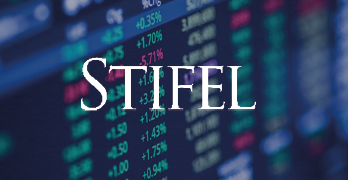BAI Index: Air Freight Rates Likely to Climb as Supply Chain Congestion Drives Further Ocean-to-Air Conversion for Essential Peak Inventory

Airfreight rates in October remain perched at elevated levels, well beyond those seen in 2020.
We posited last month that the inflection on core lanes was due to early preparations for peak season. As we push deeper into the year, we think it is likely that rates creep higher before they get lower.
Airfreight rates in October remain perched at elevated levels, well beyond those seen in 2020. Hong Kong to North America (BAI32) and Shanghai Pudong to North America (BAI82) increased 76% and 89% year-over-year, respectively, with the former increasing 2% while the latter fell 4% sequentially. Into Europe, volumes from Hong Kong (BAI31) and Shanghai (BAI81) climbed 78% and 63% year-over-year, respectively, and 20% and 7%, sequentially from September. We posited last month that the inflection on core lanes was due to early preparations for peak season. As we push deeper into the year, we think it is likely that rates creep higher before they get lower.
From a retail perspective, it is becoming clear that supply chain backlogs on the inbound side - particularly in the U.S. - show little sign of abatement. In fact, delays may be mounting. And the solution to the backlogs and bottlenecks is not as simple as increasing port throughput or extending port operating hours. Terminals and container yards are full. Drayage capacity is tight due to structural driver supply issues, as well as compounding disincentives to pick up from ports as a result of the delays. After all, what driver wants to wait in line at the port for hours with no bathroom facilities and minimal compensation for the extra time? Meanwhile, inland warehouse and storage facilities are also full, due to a lack of labour to unload, and scarce capacity to move freight to intermediate stocking locations.
Much has been made recently of relaxation of travel restrictions between Europe and the U.S. and the positive incremental benefit from belly capacity on that lane. Unfortunately, TransAtlantic supply has little impact on the China outbound routes that comprise the bulk of holiday peak volumes
The proverbial pig is stuck in the python and governmental efforts to relieve supply chain pressure will only push it deeper, in our view, at least here in the U.S. As such, we believe there is a contingent of inventory that will not arrive in time for the seasonal rush via ocean and that freight may be converted to air.
So demand pressures are acute, but what of supply? Much has been made recently of relaxation of travel restrictions between Europe and the U.S. and the positive incremental benefit from belly capacity on that lane. Unfortunately, TransAtlantic supply has little impact on the China outbound routes that comprise the bulk of holiday peak volumes. In China, stringent COVID regulations continue to bottleneck capacity, limiting labor productivity, increasing the frequency and likelihood of episodic shutdowns due to infection, and even restricting capacity types. For example, temporary “pfreighters” might be disallowed, because they take longer to load and don’t comport with regulatory time limits that are designed to minimise exposure windows.
Longer-term, there has been discussion about an increase in the appetite for passenger to freighter conversions and the impact of that capacity on the market. For example, Amazon, and most recently Maersk (in connection with its acquisition of Senator International) announced intentions to deploy more long-haul widebody aircraft. And with passenger airlines retiring long-haul equipment, there is theoretically more feedstock available for conversion. But conversion capacity is still limited and major providers are booked for at least the next few years. If and when they do enter the market, it is interesting to consider the structural implication for air cargo rates. A significant mix shift away from belly space and toward main deck freighters means that air cargo that previously enjoyed marginal contribution pricing to passenger demand might no longer be getting a “free ride”. So, air cargo might be permanently and structurally higher in the distant future. And it is likely higher in the near future, too.
About Bruce Chan, Director & Senior Analyst, Global Logistics & Future Mobility Equity Research, Stifel
Bruce Chan joined Stifel in 2010 and is based out of the Miami office.
Bruce Chan can be reached at chanb@stifel.com. Opinions expressed are subject to change without notice and do not take into account the particular investment objectives, financial situation or needs of individual investors. For more information and current disclosures for the companies discussed herein, please go to the research page at www.stifel.com.
©2021 by J. Bruce Chan.